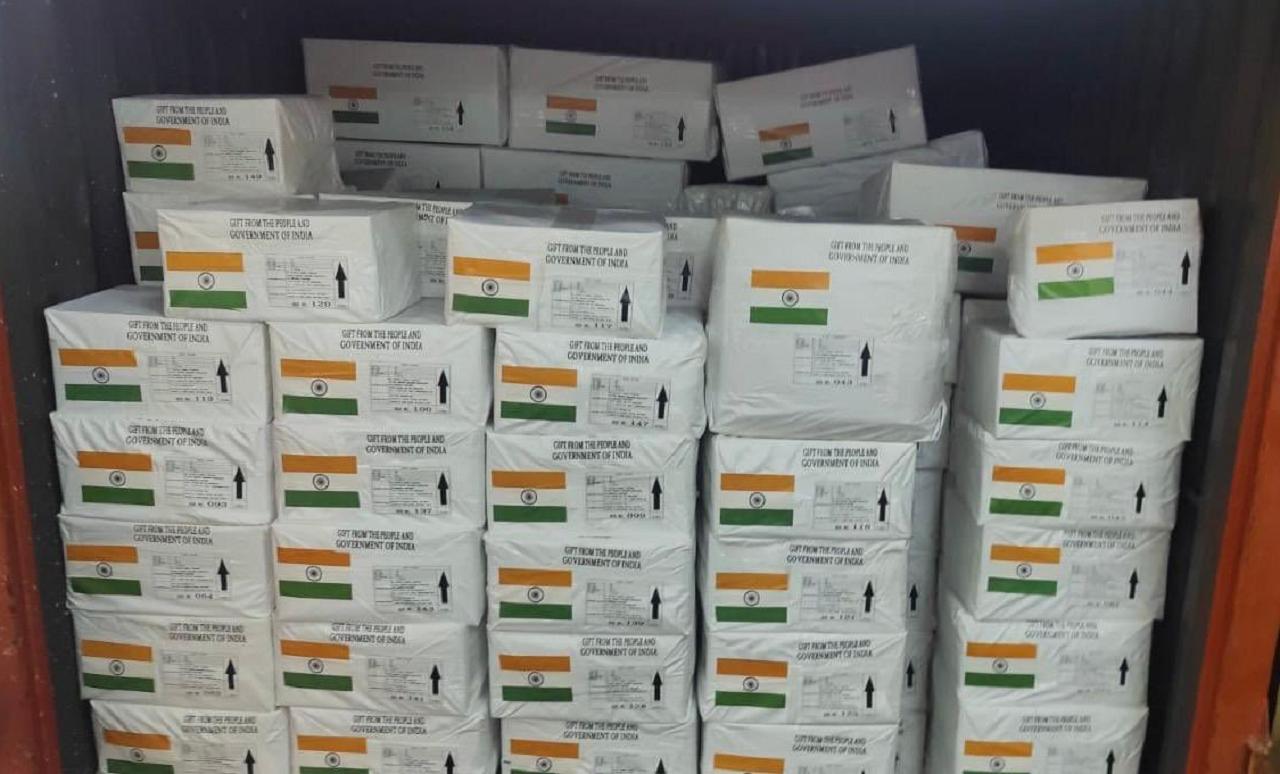Hurricane Beryl was a deadly and destructive tropical cyclone that struck parts of the Caribbean, the Yucatán Peninsula, and the Gulf Coast of the United States of America in late June and early July 2024

Pic/X@MEAIndia
India has sent humanitarian aid to Saint Vincent and the Grenadines for the rehabilitation of settlements following the devastation caused by Hurricane Beryl, according to Randhir Jaiswal, the Ministry of External Affairs Spokesperson.
ADVERTISEMENT
In a post on Saturday evening on X, Jaiswal said, "India dispatched its first tranche of humanitarian assistance to Saint Vincent and the Grenadines, for rehabilitation of settlements post Hurricane Beryl. The aid of approx 10 tons comprising sleeping bags and hygiene products has been dispatched via air route today. The remaining second tranche of 60 tons items are planned via sea route."
🇮🇳 dispatched its first tranche of humanitarian asssitance to Saint Vincent and the Grenadines, for rehabilitation of settlements post Hurricane Beryl.
— Randhir Jaiswal (@MEAIndia) September 21, 2024
The aid of approx 10 tons comprises sleeping bags and hygiene products has been dispatched via air route today. The remaining… pic.twitter.com/cxVKRFPuJ9
Hurricane Beryl was a deadly and destructive tropical cyclone that struck parts of the Caribbean, the Yucatán Peninsula, and the Gulf Coast of the United States of America in late June and early July 2024. It became the earliest Category 5 hurricane on record and only the second storm to form in July, following Hurricane Emily in 2005. Beryl also set the record as the strongest hurricane to develop in the Atlantic’s Main Development Region (MDR) before July. As the second named storm, first hurricane, and first major hurricane of the 2024 Atlantic hurricane season, Beryl shattered several meteorological records for June and July, particularly regarding its formation and intensity.
Hurricane Beryl originated from a tropical wave that departed the coast of Africa on June 25. It developed into a tropical cyclone on June 28 in the Main Development Region (MDR) and rapidly intensified as it moved westward through the central tropical Atlantic. On July 1, Beryl landed on the island of Carriacou in Grenada as a high-end Category 4 hurricane, causing widespread devastation. The storm continued to intensify as it entered the Caribbean Sea, reaching Category 5 status early the next day, with maximum sustained winds of 165 mph (270 km/h) and a minimum central pressure of 934 mbar (27.58 inHg).
However, Hurricane Beryl began to weaken due to wind shear as it passed south of Jamaica and the Cayman Islands. The hurricane briefly re-strengthened to a Category 3 before weakening again and making landfall in Tulum, Quintana Roo, as a high-end Category 2 hurricane on July 5. It weakened to a tropical storm as it crossed the Yucatán Peninsula but reorganized into a Category 1 hurricane upon entering the Gulf of Mexico. On July 8, Beryl made its final landfall near Matagorda, Texas, before gradually weakening over land. It became post-tropical over Arkansas on July 9 and eventually dissipated over Ontario on July 11.
 Subscribe today by clicking the link and stay updated with the latest news!" Click here!
Subscribe today by clicking the link and stay updated with the latest news!" Click here!







